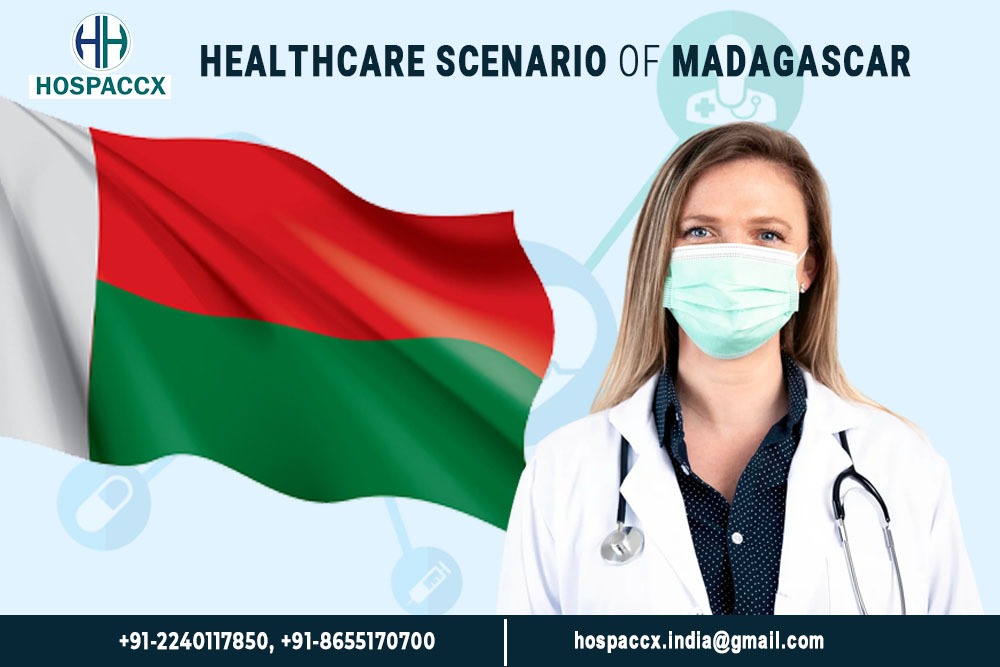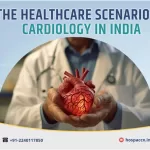HEALTHCARE SCENARIO OF MADAGASCAR
Are you planning to build or restructure or venture in any healthcare venture in Madagascar? Looking for information about the major healthcare players in government, private diagnostic centres that are available in Madagascar? Are you looking to find out which part of the cities is best to venture in or what all facilities are available and what all should be planned for a new setup? In this article, Hospaccx Healthcare Consultancy has mapped all on major players in terms of medical facilities and healthcare scenario of Madagascar.
This is the superficial and macro level survey if you need a refined market and financial feasibility or any other study related to healthcare is required you can contact Hospaccx Healthcare business consulting Pvt. ltd on Hospaccx.India@gmail.com or you can visit our website on https://hospaccxconsulting.com/
INTRODUCTION:
Madagascar’s healthcare system comprises of western and traditional medicine practices.
Traditional medicine is available throughout the country and practised largely in rural provinces.
Traditional medicine in Madagascar uses plant-based products for medicinal purposes, for example, the Raraha plant is used for its anaesthetic qualities.
Western medicine is available through public and private facilities. General hospitals are confined to the capital city Antananarivo. Other urban areas across Madagascar have hospitals, but rural areas largely lack any presence of medical facilities.
Hence why traditional medicine is largely practised.
STATISTICS OF MADAGASCAR:
| Total population (2016) | 24,895,000 |
| GNI per capita (PPP international) | 1,350 |
| Life expectancy at birth m/f (2016) | 65/68 |
| Probability of dying under five (per 1000 live births (2018) | 54
|
SOCIO-ECONOMIC OVERVIEW:
The economy remains dynamic but showed signs of weakness in 2019. After having achieved growth of 5.1% in 2018, driven by the export, transportation, finance, and construction sectors, economic activity slowed in the first half of 2019 under the combined impact of weakening external demand and a slowdown in public expenditure when the new government took office. Nevertheless, growth is projected to reach approximately 4.7% in 2019, which should result in a 2% increase in per capita income this year, far surpassing the Sub-Saharan average of 0.3%.
Ambitious public investment plans and a resurgence of confidence following the elections are projected to trigger robust growth of up to 5.3% in 2020 before it stabilizes at around 5% in 2021. However, these investments are also expected to result in considerable widening of the budget deficit, while the proliferation of public-private partnership (PPP) projects within a sometimes opaque legal and institutional framework could generate significant contingent liabilities.
These trends highlight the importance of strengthening the PPP institutional framework and of creating the fiscal space needed to support priority government expenditure. This requires an increased focus on mobilizing tax and quasi-tax- revenue, which remains among the weakest in Sub-Saharan Africa.
HEALTH EXPENDITURE:
In the above figure, most of the health care spending is from the public sector that is 47.7%, the next comes from the out-of-pocket spending that is 22.4%, voluntary prepayment spending is 2.5%, external spending is 25.1% and other health care spending is 2.5%.
HEALTH INFRASTRUCTURE:
Medical centres, dispensaries and hospitals are found throughout the island of Madagascar, although they are concentrated in urban areas and particularly in Antananarivo. Access to medical care remains beyond the reach of many Malagasy.
In addition to the high expense of medical care relative to the average Malagasy income, the prevalence of trained medical professionals remains extremely low. In 2010 Madagascar had an average of three hospital beds per 10,000 people and a total of 3,150 doctors, 5,661 nurses, 385 community health workers, 175 pharmacists and 57 dentists for a population of 22 million.
The only hospital with a cancer ward is Joseph Ravoahangy Andrianavalona Hospital. 14.6 per cent of government spending was directed toward the health sector. Approximately 70% of spending on health was contributed by the government, while 30% originated with international donors and other private sources. The government provides at least one basic health centre per commune. Private health centres are concentrated within urban areas and particularly those of the central highlands.
The public health sector in Madagascar:
Public hospitals in Madagascar are largely underfunded, resulting in shortages of modern medical equipment, medical supplies, and healthcare staff. Regional hospitals are located in urban areas of Madagascar, offering emergency, general surgery, maternity, and specialized services.
District hospitals provide primary health care, diagnostic and non-specialized service. Basic
Health Centres (BHC) provide basic health prevention services and prenatal care. Basic health centres are located throughout Madagascar, including smaller provinces in the country.
The private sector in Madagascar:
The private sector is funded mainly through the Malagasy Lutheran Church, as well as international bodies. Without a doubt, the best hospitals and health care services in Madagascar are provided by the private sector. There is increased funding, modern medical equipment, and plenty of healthcare staff available. The hygiene standards are also significantly higher in private healthcare facilities.
BURDEN OF DISEASES:
The above figure explains the percentage of total deaths caused by various diseases in Madagascar. Most of the deaths have occurred due to influenza and pneumonia that is 20% (total deaths 14,584 per100,000 populations) least number of deaths has occurred due to prostate cancer that is 2% (total deaths 1,527 per 100,000 populations).
MAJOR HOSPITALS:
- Befelatanana hospital:
Free care is provided to the patients but the resources are in desperately short supply.
- Centre Hospitalier de Soavinandriana:
The Center is a public industrial and commercial establishment (EPIC). It works with an autonomous budget, which explains its difference (in terms of price) with public hospitals and its resemblance (in terms of operation) with private clinics.
- Hopitaly Vaovao Mahafaly-The good news hospital:
The hospital now consists of Outpatients (2000 patients/month), Inpatients (57 beds – Medical, Surgical & Maternity), Operating Theatre (the only in a 200km radius performing 1400 operations per year), Eye Department (including an operating room performing 450 cataract operations per year), a Laboratory, an X-ray department, a Pharmacy and a Nursing & Midwifery school.
- Joseph Ravoahangy Andrianavalona Hospital:
It is the largest hospital in Madagascar. Located in the capital Antananarivo and founded in It consists of 621 beds.
MAJOR DIAGNOSTIC CENTERS:
- Centre De Diagnostique De Tananarive
- Centre de Prélèvement et de Vaccination – Institut Pasteur de Madagascar
- Medical Center De Diagnostiques Et D’urgences
- Medical Space Ambodivona
- Institut Pasteur de Madagascar
CONCLUSION:
Madagascar healthcare has continuously taken measures to excel in the healthcare industry. Public and private sector is working to achieve the goals in the health care industry.
What is more than improving, renewing and developing the performance of the health sector are neither optional to the administration nor voluntary, but, in the current situation, they are necessary for the survival of the health system.
It is the superficial and macro-level study for more details kindly contact Hospaccx Healthcare business consulting Pvt. ltd on Hospaccx.India@gmail.com or you can visit our website https://hospaccxconsulting.com/
Related Team Members










